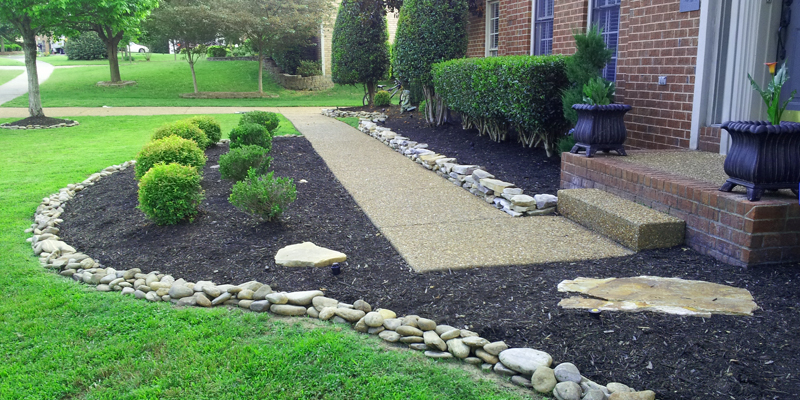Common Fungal Diseases in Lawns and Trees
Lawn Conditions
Brown Patchbrown patches of grass
Brown patch is one of the most common fungal diseases that affect lawns. The time that it is active is in late spring or early summer, when temperatures are consistently above 70°C and the air is humid. Your blades ' color will change from green to brownish-purplish when there are brown patches. It's not uncommon to find smoking bands of black or gray grass at the edges of brown patches in the morning in the morning when the grass is damp. If the condition is allowed to persist the grass will begin to weaken. grass, causing weeds and insects to invade and eventually, the blades may die and wither.
Proper lawn care is the best way to prevent brown patches from appearing. This involves frequent mowing in a gradual reduction of the height to 2 1/2 inches and only watering in the mornings when necessary. landscaping companies in Georgetown KY are the best option in this regard.
Red Thread
Red thread is different from other lawn fungi and doesn't harm grass. It can alter the look of your lawn by making it appear as if someone has woven red thread through it. In closer examination, you'll find the threads in reddish hues appear like thorns or antlers that are protruding between the blades of grass. As you can imagine, this alters the look of the beautiful green lawn we want to have. Red thread is a great option for fungicides. Regular fertilization is a great method to stop this irritable disease from recurring. A well-groomed lawn is better equipped to ward off diseases and pests.
Snow Mold
Snow mold gets its name because it lives under the snow that covers our lawns, and is not noticed until spring. The fungus causes areas of dead grass, and some individuals might experience allergic reactions when exposed. There are two kinds of pink snow mold: Microdochium nivale (Microdochium roseale) and Typhula indica (Typhula permanent). Both are able to be found on any type of grass and aren't susceptible to cold. Gray snow mold is lighter or bleached more than pink, which you may have imagined. In general, gray snow mold produces dead patches that could be up to many feet in size while pink snow mold patches measure no more than a foot in length and Lawn Worx is a perfect option to try.
Powdery Mildew
Powdery mildew is an illness that makes your lawn look as if someone has sprinkled baby powder on it. The fungal issue is evident in late spring and may be detrimental to not only turfgrass, but also leaves of trees, shrubs, and even flowers.
Necrotic Ring
The majority of lawn diseases cause large circles of dead grass. The mold is destroyed by the necrotic ring. Instead, it appears as donut-shaped rings. The center of the grass remains intact. Necrotic ring is a fan of grasses with cool seasons, and after it's been on your lawn, you may need some help getting back on its feet and use a lawn mowing service near me.
Tree And Shrub Diseases
Leaf Spot
Leaf spot turns into circular spots on your plants and trees. These spots initially appear in a light tan hue, but then turn brown and black. The leaves then fall off the tree in the early autumn. If you've found several of these leaves on your ornamental plants you're likely to be a bit upset. But don't panic! You can remove the infected leaves and then take a waiting-and-see approach. Incorporating a tree and shrub care program such as the one Farison's Lawn offers can help keep your trees and plants healthy and free of diseases like leaf spot.
Learn More:https://www.google.com/maps?cid=8555462248213683747
Tar Spot
Tar spot is usually not harmful to the overall health of the trees. It can cause leaves to fall earlier than usual. Tar spots are first noticed in the latter half of spring or early summer, and infected leaves develop light spots of yellow or green. From mid to late summer there are black tar-like formations on the surface of leaves in the yellow spots, which is oak wilt where the disease gets its name. The spots measure 1/4 to 3/4 inches in diameter. They are typically caused by Rhytisma punctatum or Rhytisma arrium. Kentucky lawn care is able to effectively treat the problem.
| https://twitter.com/WorxLawn |
| https://www.instagram.com/lawnworx591/ |
| https://www.pinterest.ph/lawnworx591/ |
| lawn-worx.tumblr.com |
| https://www.reddit.com/user/lawnworx48 |
Georgetown tree service
lawn care Nicholasville, ky
sharp lawn Lexington ky
landscaping Frankfort ky
mulch delivery Lexington ky
Lawn Worx
116 Valhalla Pl, Georgetown, KY 40324
859-285-0079

